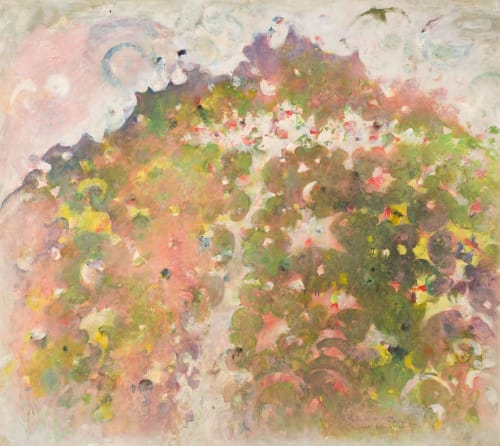Jacqueline Lamba was never interested in categorical pigeonholes. When her husband, Andre Breton, drew a distinction between Automatist Surrealism (ala Joan Miró) and Veristic Surrealism (ala Salvador Dalí), she responded by creating works that blended both stylistic orientations into a mystical and occasionally frightening singularity. Later, after she and Breton had visited her friend Frieda Kahlo in Mexico City, she was captured by the idea that Mexico was more surreal than Surrealism itself, prompting a series of still life and landscape paintings created throughout the 1950s that blended George Braque's late post-Cubism with design motifs echoing Mexican folk art, with a little Art Brut tossed in for good measure. After 1960, her focus again switched to highly stylized landscapes that were so drenched in a misty atmospheric light that they appeared to be abstract, echoing the look and purposes of the then-current practices of Art Informal and Tachisme, two terms that bespoke the relatively fussy French stylization of Abstract Expressionism. She continued to work in that mode for the remaining three decades of her life, residing as a recluse in the small alpine village of Simiane-la-Rotonde (in southeastern France) until her passing in 1993 at the age of 83.
Jacqueline Lamba: Beyond Surrealism
Mark Van Proyen, Squarecyclinder, Mar 26, 2023

